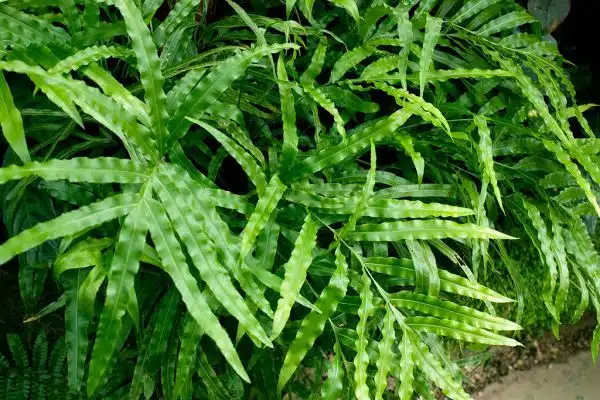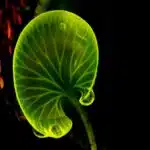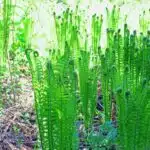Pteris ferns, also known as brake ferns, belong to a diverse genus of about 300 species of ferns that are commonly grown indoors. These plants are native to tropical and subtropical regions and thrive in warm, humid conditions with bright, indirect light. Pteris ferns are popular indoor plants due to their ease of care and attractive foliage.
As horticulturists and plant specialists, it is our duty to provide comprehensive care and growing guides for indoor plants such as Pteris ferns. In this article, we will delve into the specific needs of these ferns including light requirements, soil type, watering frequency, and common pests and diseases. With proper care and attention, Pteris ferns can bring beauty and vitality to any indoor space.
Introducing Pteris Ferns: A Guide To Indoor Plant Care And Growing
Pteris ferns are renowned for their unique and striking appearance, making them a popular choice for indoor plant enthusiasts. With their intricate fronds and delicate foliage, Pteris fern varieties have become a staple in many households. These plants are not only aesthetically pleasing but also offer numerous benefits to those who choose to cultivate them.
Indoor plants, in general, have been shown to improve air quality by removing harmful toxins and pollutants from the environment. Pteris ferns are no exception, as they possess the ability to purify the air within your home or office space. Additionally, having indoor plants has been linked with reducing stress levels and improving mental health. The calming effect that these plants provide can create a more peaceful atmosphere that promotes relaxation.
Understanding the Pteris fern genus is essential for anyone looking to cultivate these fascinating plants successfully. By learning about their natural habitat, preferred growing conditions, and maintenance requirements, you can ensure your Pteris ferns thrive in your care. With proper care and attention, these indoor plants can add a touch of natural beauty to any space while providing numerous benefits to both your physical and mental well-being.
Understanding The Pteris Fern Genus
The Pteris genus is represented by a diverse group of ferns, ranging from ground-creeping species to tall climbing varieties. The water and sun needs of the Pteris genus vary depending on the species, with some requiring more moisture than others. Most Pteris species prefer partial or filtered shade, but some can tolerate full sun if provided with adequate moisture. With proper care, the Pteris fern genus can provide an interesting and unique display of foliage and texture in any indoor setting.
Types Of Pteris Ferns
Pteris ferns are a genus of ferns that belong to the Pteridaceae family. They are commonly known as brake ferns and boast unique characteristics that make them stand out from other types of indoor plants. The Pteris genus comprises more than 200 different species, including some rare and exotic varieties.
One of the most popular pteris fern varieties is the crested brake fern (Pteris cretica). This unique pteris species has delicate green fronds with a wavy edge and a distinctive crest at the top. Another favorite among gardeners is the silver lace fern (Pteris ensiformis), which features long, narrow fronds with silvery-gray undersides. Other notable pteris species include the ribbon fern (Pteris vittata), which has thin, ribbon-like leaves, and the Chinese brake fern (Pteris chinensis), which boasts vibrant green foliage.
Growing pteris ferns can be challenging, especially if you’re new to indoor plant care. However, understanding the different types of pteris ferns can help you choose the right variety for your home or office. Each species has unique growth habits, light requirements, and watering needs, so it’s essential to do your research before bringing one home. With patience and dedication, you can enjoy the beauty of these incredible plants for years to come.
In conclusion, there are many exciting pteris fern varieties available to indoor plant enthusiasts. From crested brake ferns to silver lace ferns, each type has its own set of characteristics that make it special. By learning about these unique pteris species and their care requirements, you can grow healthy and thriving plants that add natural beauty and serenity to any space.
Water And Sun Requirements
As a horticulturalist, it is crucial to understand the water and sun requirements of the different pteris fern varieties. These requirements can vary significantly depending on the species and can affect the plant’s growth and health. Watering techniques are essential for maintaining healthy pteris ferns. Overwatering or underwatering can both be detrimental to these plants. It is recommended to keep the soil consistently moist but not waterlogged and allow the top inch of soil to dry out between watering sessions.
Sun exposure tips are also critical when it comes to growing pteris ferns. Most species prefer bright, indirect sunlight, while others can tolerate low light conditions. However, direct sunlight should be avoided as it can scorch and damage their delicate fronds. It is best to place your pteris ferns near a window that receives filtered light or in an area with bright but indirect lighting.
In summary, understanding the water and sun requirements of pteris ferns is crucial for maintaining healthy plants. Proper watering techniques include keeping the soil consistently moist without overwatering or underwatering, while providing enough sunlight without exposing them to direct sunlight that could cause damage. By following these tips, indoor plant enthusiasts can enjoy thriving and beautiful pteris ferns in their homes or offices.
Popular Pteris Fern Species For Indoor Use
Having understood the Pteris Fern Genus, it is essential to know about the popular Pteris Fern Species that are suitable for indoor decor. These ferns come in different varieties, and each adds a unique appeal to your indoor space. The Pteris Creeping Fern, Silver Lace Fern, and Cretan Brake Fern are some of the most popular species that you can consider.
The Pteris Creeping Fern is an excellent choice for hanging baskets or as a ground cover. It has long arching fronds with small leaves that create a dense mat-like appearance. The Silver Lace Fern is another popular species with delicate foliage that has white margins. It forms a mound of foliage and looks stunning in pots or as part of mixed planters. The Cretan Brake Fern has glossy green foliage with a feathery texture that brings elegance to any room.
Propagation methods for Pteris ferns vary depending on the species. Most ferns propagate through spores, which require specific conditions to germinate successfully. However, you can also propagate some species by dividing their rhizomes during spring or early summer. Ensure that you use sterile equipment when propagating your ferns to prevent disease transmission.
As you plan on how to care for your Pteris ferns, it is essential to know their lighting requirements. These ferns prefer low to medium light levels and thrive well in bright indirect sunlight. Avoid exposing them to direct sunlight as it may cause leaf scorching or yellowing. With proper care and maintenance, your Pteris ferns will add beauty and elegance to your indoor space while purifying the air around you.
Lighting Requirements For Pteris Ferns
Pteris ferns are known for their adaptability and can survive in a wide range of lighting conditions. However, this does not mean that they do not have specific lighting requirements. To ensure optimal growth, it is important to provide the right balance of natural and artificial light.
In terms of natural lighting, pteris ferns prefer bright but indirect light. This means placing them near a north or east-facing window where they can receive filtered sunlight throughout the day without being exposed to direct rays. South or west-facing windows may be too intense and can cause leaf burn, while too little light may result in slow growth and yellowing leaves.
Artificial lighting can also be used to supplement natural light or as a sole source of light for indoor pteris ferns. Fluorescent lights are often recommended as they emit the right spectrum of light for plant growth while producing minimal heat. Adjusting the distance between the plants and the lights can also help regulate the amount of light they receive.
It is important to note that seasonal changes can affect pteris ferns’ lighting needs. During winter, when daylight hours are shorter, artificial lighting may need to be increased to compensate for reduced natural light. Similarly, during summer when days are longer, plants may require more shade or protection from direct sunlight. By regularly monitoring and adjusting lighting conditions, you can ensure healthy growth and vibrant foliage for your pteris ferns.
Moving on to temperature and humidity needs…
Temperature And Humidity Needs
Pteris ferns are a great addition to indoor gardens and require proper care for healthy growth. As discussed in the previous section, these plants thrive in low to medium light environments. However, lighting is not the only factor that determines their overall health. Temperature and humidity are also crucial elements for their survival.
The ideal temperature range for Pteris ferns is between 60°F to 75°F. These tropical plants prefer warm temperatures and cannot tolerate cold drafts or sudden fluctuations in temperature. Under extremely cold conditions, they may wilt or even die off. Therefore, it’s essential to maintain a consistent temperature within the recommended range.
In addition to temperature, proper humidity levels are equally important for Pteris ferns. These plants prefer humid environments with moisture levels ranging between 50% to 70%. Low humidity levels can cause wilting of leaves and affect their overall health. To maintain proper humidity levels, use a humidifier or place a tray filled with water near the plant’s location.
Maintaining ideal temperature and humidity levels is critical for ensuring the long-term survival of Pteris ferns indoors. With these factors under control, you can be sure that your indoor garden will thrive with lush green foliage throughout the year! In the next section, we’ll explore another critical aspect of caring for Pteris ferns – soil type and composition.
Soil Type And Composition
Pteris ferns are known to be sensitive to soil type and composition. For successful growth, they require a specific soil that is well-draining and contains a high amount of organic matter. Additionally, the soil should contain adequate nutrients such as phosphorus, nitrogen, potassium, and magnesium for optimal growth. The soil pH should also be maintained between 5.5 and 6.5 for best results. These soil requirements should be met in order to ensure the health and growth of the pteris fern.
Soil Requirements
When it comes to indoor plant care, one of the essential aspects is ensuring that the soil requirements of plants are met. Pteris ferns thrive in a well-draining potting mix that allows air to circulate around the roots while retaining enough moisture. The ideal soil composition for pteris ferns should be light and porous, allowing water to flow through quickly.
To create an adequate potting mix for pteris ferns, you can mix peat moss, perlite or vermiculite, and coarse sand in equal parts. This mixture provides good drainage solutions and also helps retain moisture. Additionally, adding a layer of organic compost at the bottom of the container helps improve soil quality while providing nutrients for healthy growth.
It is crucial to ensure proper soil requirements for pteris ferns as they are sensitive to overwatering that may lead to root rot. Therefore, using a well-draining potting mix with good drainage solutions is key. By providing optimal growing conditions such as proper soil composition and adequate watering practices, you can enjoy lush green fronds from your pteris fern all year round.
Soil Nutrients
As plant specialists, we understand that soil type and composition play a significant role in the growth and development of indoor plants such as pteris ferns. While proper drainage solutions are essential for healthy growth, it is also important to ensure that the potting mix provides adequate nutrients for the plant. Soil nutrients are vital to pteris ferns as they require optimal pH levels for their growth.
The optimal pH range for pteris ferns is between 5.5 and 7.0. With this in mind, it is crucial to test the soil regularly to ensure that it falls within this range. If necessary, you can adjust the pH by adding organic amendments such as compost or manure to improve soil quality and provide essential nutrients required by your plants.
Organic amendments not only provide essential nutrients but also help retain moisture in the soil, which is essential for pteris ferns’ growth. By incorporating organic matter into your potting mix, you can create an environment that promotes healthy root development while providing optimal growing conditions for your plants. In conclusion, ensuring proper soil requirements such as optimal pH levels and organic amendments will help you achieve a thriving pteris fern in your indoor space.
Soil Ph
Soil type and composition play a crucial role in the growth and development of indoor plants, including pteris ferns. As plant specialists, we understand that proper drainage solutions are essential for healthy growth. However, it is equally important to ensure that the potting mix provides adequate nutrients for the plant’s optimal growth. Soil nutrients are vital to pteris ferns as they require optimal pH levels for their growth.
One critical aspect of soil composition is soil pH, which refers to the acidity or alkalinity level of the soil. Pteris ferns have an optimal pH range of between 5.5 and 7.0, making it crucial to test the soil regularly to ensure that it falls within this range. Testing soil acidity will help you determine if your potting mix needs adjustments in its pH levels.
Adjusting pH can be done by adding organic amendments such as compost or manure to improve soil quality and provide essential nutrients required by your plants. Organic amendments not only provide essential nutrients but also help retain moisture in the soil, which is essential for pteris ferns’ growth. By incorporating organic matter into your potting mix, you can create an environment that promotes healthy root development while providing optimal growing conditions for your plants.
Overall, understanding how soil type and composition affect plant growth is critical when cultivating indoor plants such as pteris ferns. Testing soil acidity regularly and adjusting pH through organic amendments will help you achieve optimal growing conditions for your plants, leading to a thriving indoor garden space.
Watering Frequency And Techniques
Water is an essential element for the growth of any plant, including pteris ferns. However, overwatering or underwatering can be detrimental to the health of your ferns. Therefore, it is vital to understand the watering frequency and techniques required to keep your pteris ferns healthy.
The watering frequency for pteris ferns depends on several factors such as temperature, humidity, soil type, pot size, and light exposure. As a general rule of thumb, it is recommended to water your pteris ferns once a week during warmer months and every two weeks during winter. Always check the soil moisture level before watering by sticking your finger into the soil up to the first knuckle. If it feels dry, then it’s time to water your plant.
When it comes to watering techniques for pteris ferns, there are two main methods: bottom watering and top watering. Bottom watering involves pouring water into a saucer or tray underneath the pot, allowing the roots to absorb water from the bottom up. Top watering involves pouring water directly onto the soil surface until excess water drains out of the bottom of the pot. It is recommended to use room temperature water and avoid getting water on the fronds while top watering.
| Watering Frequency | Soil Moisture Level | Watering Technique |
|---|---|---|
| Once a week | Dry | Bottom |
| Every two weeks | Moist | Top |
Proper watering techniques are crucial for maintaining healthy pteris ferns. Overwatering can lead to root rot and fungal diseases while underwatering can cause wilting and stunted growth. By following these guidelines for watering frequency and techniques, you will ensure that your pteris fern thrives in its indoor environment.
Moving on from proper watering techniques for pteris ferns, the next step in plant care is fertilization and nutrient requirements. Understanding these aspects of plant care will help you to maintain healthy pteris ferns that add a touch of greenery to your indoor space.
Fertilization And Nutrient Requirements
Fertilization is an essential part of pteris ferns’ care routine. These plants require a steady supply of nutrients to grow healthy and strong. Fertilizers provide the necessary elements that are not present in the soil or are depleted over time. It’s important to choose the right type of fertilizer for your pteris ferns, as different fertilizers have distinct nutrient profiles and release rates.
Organic vs synthetic fertilizers are two common types of fertilizers available on the market. Organic fertilizers are derived from natural sources such as animal manure, compost, and bone meal. They contain a variety of macro and micronutrients that are slowly released into the soil over time through microbial activity. On the other hand, synthetic fertilizers are made from chemical compounds that provide specific nutrients in higher concentrations. They work faster but may lead to nutrient imbalances in the soil if not used correctly.
Nutrient deficiencies can occur when pteris ferns do not receive adequate amounts of essential minerals such as nitrogen, phosphorus, potassium, iron, and magnesium. Symptoms of nutrient deficiencies include yellowing leaves, stunted growth, brown spots or edges on leaves, and weak stems. To address these issues, it’s important to identify which nutrient(s) is lacking and apply the appropriate fertilizer accordingly. Regular soil testing can help detect any potential deficiencies early on before they become severe enough to harm your plant.
Moving forward with our discussion about pteris ferns care routine is pruning and maintenance tips.
Pruning And Maintenance Tips
As the saying goes, “Prune early, prune often.” This is especially true for pteris ferns, which require regular pruning to maintain their shape and overall health. Pruning techniques vary depending on the growth pattern of your specific pteris fern, but generally involve removing dead or damaged fronds and trimming back overgrown ones.
One important aspect of pteris fern maintenance is establishing a regular schedule. It’s recommended to inspect your ferns weekly for any signs of damage or disease, and to prune as needed. Additionally, it’s important to fertilize your ferns regularly and provide them with adequate water and sunlight.
When pruning your pteris ferns, be sure to use clean, sharp tools to avoid damaging the plant. It’s also important not to remove too many fronds at once, as this can shock the plant and cause further damage. By following these maintenance tips and pruning techniques, you can keep your pteris fern thriving for years to come.
To ensure optimal growth and health for your pteris ferns, it’s important to also watch out for common pests and diseases that can affect these plants. Some common issues include spider mites, mealybugs, and scale insects. If you notice any signs of infestation or disease such as wilting leaves or discoloration, take immediate action to address the problem before it spreads further. Regular inspections and proper care can help prevent these issues from occurring in the first place.
Common Pests And Diseases To Watch Out For
After pruning and maintenance, it is important to be aware of common pests and diseases that can affect pteris ferns. These issues can have a negative impact on plant health and growth, so it is crucial to identify and treat them promptly. Some common pests include spider mites, mealybugs, and scale insects. These pests feed on the sap of the plant and can weaken it over time.
To prevent these pests from infesting your pteris ferns, there are several prevention methods you can use. Regularly inspecting your plants for signs of infestation is one important step to take. You should also avoid overwatering your plants as this can make them more susceptible to pest attacks. Additionally, introducing natural predators such as ladybugs or lacewings can help keep pest populations under control.
In addition to pests, pteris ferns may also be susceptible to diseases such as root rot or leaf spot. These diseases can be caused by fungal or bacterial infections and can cause leaves to yellow or wilt. To combat these issues, there are several natural remedies you can try such as neem oil or copper fungicide. It is important to note that prevention methods such as proper watering techniques and good air circulation can also help prevent these diseases from occurring in the first place.
Identifying and treating pteris fern issues promptly is essential for maintaining healthy plants. By taking preventative measures such as regular inspections and using natural remedies when necessary, you can keep your pteris ferns thriving for years to come. In the next section, we will go over some common issues that may arise with pteris ferns and how to effectively treat them without causing harm to the plant’s overall health.
Identifying And Treating Pteris Fern Issues
Pteris ferns are relatively low-maintenance plants, but like any other plant species, they can be susceptible to a variety of issues. Identifying these issues early is crucial in preventing them from spreading and causing irreversible damage to the plant. One of the most common problems with pteris ferns is root rot. This occurs when the soil stays too wet for too long, and the roots begin to decay. Signs of root rot include yellowing leaves that fall off easily, a foul odor coming from the soil, and stunted growth. Preventive measures include ensuring proper drainage by choosing high-quality soil that allows water to flow freely through it and not overwatering the plant.
Another issue that may affect pteris ferns is pest infestation. Common pests that attack ferns include spider mites, scale insects, and mealybugs. These pests suck sap from the plant, leading to yellowing leaves and stunted growth. Identifying techniques for pest infestation include regularly inspecting the undersides of leaves for signs of pests, as well as keeping an eye out for webbing or sticky residue on the plant’s surface. Preventive measures include practicing good sanitation by wiping down leaves with a damp cloth regularly.
Finally, pteris ferns may experience nutrient deficiencies due to poor soil quality or lack of fertilization. Signs of nutrient deficiencies include pale or yellowed leaves, stunted growth, and reduced foliage density. Preventative measures include using high-quality potting soil that contains organic matter, regularly fertilizing with a balanced liquid fertilizer according to package instructions.
Transition: Now that we have discussed how to identify and treat issues with pteris ferns let us move on to discuss propagation techniques for this unique plant species.
Propagation Techniques For Pteris Ferns
After identifying and treating issues with your pteris ferns, it is important to consider propagating them. This allows you to expand your collection or share with other plant enthusiasts. Did you know that there are several propagation techniques for pteris ferns? One interesting statistic is that water propagation has become increasingly popular due to its ease and success rate.
Water propagation involves placing the fern cutting in a container of water and changing the water every few days until roots emerge. Division technique, on the other hand, involves separating the root ball into two or more sections using a sharp knife or pruning shears. Both methods can be successful if done correctly, but it is important to note that division should only be done when the plant has become too large for its current pot.
When propagating pteris ferns, it is crucial to provide them with proper care and attention. This includes keeping them in a warm, humid environment with indirect light and ensuring they receive adequate watering. Once the new plants have established themselves, they can be transplanted into their own pots or shared with others. In the next section, we will discuss tips and techniques for transplanting and repotting pteris ferns to ensure their continued growth and health.
Transplanting And Repotting Pteris Ferns
When it comes to transplanting and repotting pteris ferns, choosing the right pot and soil is essential. A pot that is too small can limit growth, while a pot that is too large can lead to overwatering and root rot. Pteris ferns prefer well-draining soil, so mixing in sand or perlite with a standard potting mix can improve drainage.
To transplant a pteris fern, gently remove it from its current container, being careful not to damage the roots. Choose a new container that is one size larger than the current one and fill it with fresh soil mix. Place the fern in the new container and fill in any gaps around the edges with additional soil. Water thoroughly and place in a bright but indirect light location.
When repotting pteris ferns, there are some common mistakes to avoid. One of these is using an overly large container which leads to overwatering and root rot. Another mistake is repotting too frequently – pteris ferns only need to be repotted every 2-3 years. To manage transplant shock, water sparingly for the first few days after repotting and avoid fertilizing for at least a month. Root pruning can also help stimulate new growth but should only be done when necessary.
Next up: decorating with pteris ferns – tips and ideas on how to incorporate this beautiful plant into your indoor decor!
Decorating With Pteris Ferns: Tips And Ideas
Pteris ferns are not only versatile indoor plants, but they can also be used as decorative elements in your home. One way to decorate with Pteris ferns is by using them as wall decor. Hang them up in a vertical garden or simply mount them on a board for an eye-catching display. Not only will it add some greenery to your space, but it will also bring texture and depth to your walls.
Another creative way to incorporate Pteris ferns into your home design is by bringing them into your bathroom. The humidity present in bathrooms makes it the perfect environment for these moisture-loving plants. Place them on shelves or hang them from the ceiling near a window for optimal light exposure. Not only will they thrive in this environment, but they will also add a touch of elegance and natural beauty to your bathroom.
When decorating with Pteris ferns, keep in mind that they come in various shapes and sizes. Incorporate different varieties of Pteris ferns together to create visual interest and depth. In addition, use contrasting pots or planters that complement the colors of the foliage. By doing so, you can create stunning displays that are both aesthetically pleasing and functional.
Next up: Frequently Asked Questions about Pteris Fern Care and Growth .
Frequently Asked Questions About Pteris Fern Care And Growth
Pteris ferns are a delightful addition to any indoor space, with their delicate foliage and unique texture. However, caring for these ferns requires some attention to detail. One common question is about the best pots for Pteris ferns. It’s important to choose a pot that allows for proper drainage and doesn’t hold excess water, as this can lead to root rot. Additionally, Pteris ferns prefer to be slightly root-bound, so don’t choose a pot that is too large for the plant.
Another frequently asked question about Pteris fern care is regarding natural enemies. While these plants are generally hardy and resistant to pests, they can occasionally fall prey to spider mites or mealybugs. The best way to prevent these pests from taking hold is by keeping your plant healthy through proper watering and fertilization. If you do notice signs of infestation, such as webbing or sticky residue on the leaves, treat your plant with an insecticidal soap or neem oil.
In summary, Pteris fern care requires attention to detail but is well worth it for the beauty and freshness they bring to any indoor space. Be sure to choose a well-draining pot that isn’t too large for the plant and keep an eye out for natural enemies like spider mites or mealybugs. With proper care and attention, your Pteris fern will thrive and delight you with its charm for years to come!
Frequently Asked Questions
Can Pteris Ferns Be Grown Outdoors?
In terms of outdoor growth, pteris ferns are generally tolerant to a wide range of conditions. However, it is important to note that they thrive in soil that is well-draining and rich in organic matter. Additionally, they require adequate levels of moisture and protection from direct sunlight. As such, the ideal location for growing pteris ferns outdoors would be a partially shaded area with moist soil that drains well. Horticulturalists recommend using a fertilizer high in nitrogen during the growing season to promote lush foliage growth. Overall, with proper care and attention to their specific soil requirements, pteris ferns can be successfully grown outdoors.
How Long Do Pteris Ferns Typically Live?
Pteris ferns are a popular indoor plant, known for their attractive fronds and ease of care. The lifespan of pteris ferns typically ranges from two to five years, depending on the species and growing conditions. To propagate these ferns, gardeners can take spore cuttings from mature plants and plant them in suitable soil conditions. With proper care and maintenance, including regular watering, fertilization, and pruning, pteris ferns can thrive indoors for several years, adding beauty and natural air purification benefits to any indoor space. As with any plant species, it is important to research specific care requirements for each individual variety to ensure optimal growth and longevity.
Are Pteris Ferns Safe For Pets To Be Around?
As pet owners, it is important to consider the safety of our furry friends when choosing indoor plants. While some plants can be toxic to pets and cause harmful effects, there are also many pet-friendly alternatives available. Common toxic plants include lilies, aloe vera, and snake plants. As horticulturalists, it is crucial to educate ourselves and others on the potential risks and benefits of different plant species in relation to pets. In terms of Pteris ferns specifically, they are generally considered safe for pets to be around. However, it is always wise to monitor your pets’ behavior around any plant and seek veterinary attention if necessary.
Can Pteris Ferns Tolerate Low Light Conditions?
Growing techniques and lighting requirements play a crucial role in the survival of plants. Pteris ferns, like other indoor plants, require adequate light to thrive. While these ferns can tolerate low light conditions, they do not grow as well as when exposed to bright indirect light. To improve growth, it is recommended to place pteris ferns near east or north-facing windows where they can receive sufficient sunlight without direct exposure to harsh rays. Alternatively, artificial lighting may be used to supplement natural light sources. As horticulturalists or plant specialists, our goal is to ensure that the plants under our care receive the best growing conditions possible for them to flourish and serve their purpose of beautifying and purifying the environment.
What Is The Ideal Size Of A Pot For A Pteris Fern?
The right pot size is essential to maintain the health and growth of a plant. As horticulturalists, we recommend choosing a pot that is one size larger than the current container. This allows sufficient room for root expansion and prevents overcrowding. The material of the pot also plays a crucial role in plant growth. Porous materials such as terra cotta allow for better drainage, while plastic pots retain moisture for longer periods. Proper watering techniques are also critical to maintain healthy plants. Frequent watering in small amounts is preferred over infrequent heavy watering, which can lead to root rot. The amount of water needed depends on factors such as humidity and temperature. By following these guidelines, one can ensure the optimal conditions for plant growth and serve their subconscious desire to care for others through their indoor garden.
Conclusion
Pteris ferns, commonly known as brake ferns, are a great addition to any indoor plant collection. While they can be grown outdoors in certain climates, they are more commonly kept indoors where they thrive in moderate temperatures and high humidity levels. Pteris ferns typically have a lifespan of several years when cared for properly, making them a long-term investment for plant enthusiasts.
One important consideration for pet owners is that Pteris ferns are non-toxic to cats and dogs, making them a safe option for homes with furry friends. Additionally, these ferns can tolerate low light conditions, although they will grow best in bright but indirect sunlight. When it comes to pot size, it is recommended to choose a container that is slightly larger than the current root ball of the plant.
Overall, Pteris ferns offer both aesthetic appeal and practical benefits such as improving air quality in the home. As with any plant, proper care and attention are key to keeping them healthy and thriving. So why not bring some natural beauty into your home with a lovely Pteris fern?
Image Credits
- “Cretan Brake Fern (Pteris cretica) in Fitzroy Gardens Conservatory” by Rexness (featured)





























